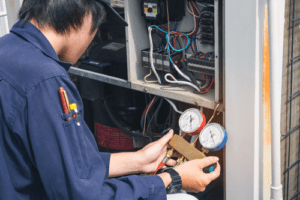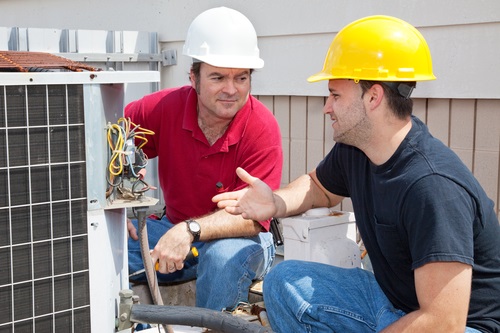If you have been studying air conditioners so that you can learn more about them and have a better idea of how they work, then you have probably come across several articles concerning condensate pans. However, if you do not have considerable experience with air conditioners, you may not even know what condensate pans are—much less how to take care of them properly. However, you should not be worried. The condensate pan is a relatively simple part of your HVAC system, although it does fulfill an essential function. Learning a little more about condensate pans here will help you understand how to take care of the pans in your system if they should ever require care and maintenance. As a result, you may be able to prevent several complications from occurring in your system and enjoy an HVAC with a longer, healthier life.
What Are Condensate Pans, and How Do They Work?
 Firstly, you should know exactly what the condensate pan in your AC does. It may not surprise you to learn that condensate pans exist to capture the condensation that naturally occurs in your air conditioner as it functions. Condensation occurs on the evaporator coils during regular use of your AC, which is designed so that it flows into a condensate drain and is taken away by the drain line. Moisture collects in your drain pan until it can be removed via the drain line—but if the condensate drain pan itself is broken or rusted through, then the water will leak out of your HVAC and spill onto the floor near your indoor unit instead. Water can be a slipping hazard, cause damage, and even foster mold in your home if this is allowed to happen. As such, it is imperative to take care of the drain pan, so that leaking water does not put your indoor unit or the surrounding area at risk.
Firstly, you should know exactly what the condensate pan in your AC does. It may not surprise you to learn that condensate pans exist to capture the condensation that naturally occurs in your air conditioner as it functions. Condensation occurs on the evaporator coils during regular use of your AC, which is designed so that it flows into a condensate drain and is taken away by the drain line. Moisture collects in your drain pan until it can be removed via the drain line—but if the condensate drain pan itself is broken or rusted through, then the water will leak out of your HVAC and spill onto the floor near your indoor unit instead. Water can be a slipping hazard, cause damage, and even foster mold in your home if this is allowed to happen. As such, it is imperative to take care of the drain pan, so that leaking water does not put your indoor unit or the surrounding area at risk.
How Can You Check Your Condensate Drain Pan?
- Before doing anything else, ensure that you have turned off your air conditioner.
- The first thing you should do when checking the condensate drain pan is to find it. Look at the upper portion of your indoor unit, which will probably be located in your basement or attic. Find the access panel and remove it.
- Once you have removed the access panel, check to see how much water is in the condensate drain pan. If there is standing water in the pan, it may indicate a clog or blockage in your drain line.
- Unblock the drain line (if applicable). If you cannot unblock it by yourself, contact a professional who will be able to suction it using a shop vacuum or other specialized tools.
- Clean the drain pan with soap. Occasionally, the unwanted material can congeal in a drain pan and cause unpleasant odors or contribute to drain line problems.
- While you are cleaning the pan, keep an eye out for holes, signs of rust, or cracks. Any of these can cause significant water leakage from your access panel onto the floor surrounding your indoor unit.
Can You Repair a Condensate Drain Pan?
Some people are shocked to discover that their drain pans are not in excellent condition and want to repair the damage. However, it is impractical to attempt to fix a cracked or broken drain pan. Instead, it is advisable to purchase a new drain pan and replace the older one with it. A new drain pan can cost between $250-$575 dollars. While this may seem like a lot of money, it is worth the price as long as you take care of the new pan and prevent it from becoming damaged.
How Can You Prevent Damage to Your New Condensate Drain Pans?
Once they have had to replace an old and broken drain pan, most people are eager not to have to replace the new one anytime soon. However, it should be noted that there is no complex secret to caring for your drain pan. You should simply give it regular maintenance while you use your air conditioner so that you can prevent it from becoming damaged, and call for help if the problem is beyond your abilities. Checking for standing water in the drain pan is most important for metal pans since they will be most at risk of rusting through. For plastic pans, an occasional check to make sure no foreign objects have entered it will suffice to ensure that your drain pan is not damaged as you use it.
Condensate pans are extremely useful, but they must be cared for and looked after if you want your HVAC to function correctly. Review the information contained above and use it to ensure that you always know what’s going on with the pan.
Check with us here at Valley Comfort Heating and Air, our customers love our attention to detail and our friendly, affordable service. (707) 539-4533

